
Salvador Domingo Felipe Jacinto Dalí i Domènech, Marquess of Dalí of Púbol, known as Salvador Dalí, was a Spanish surrealist artist renowned for his technical skill, precise draftsmanship, and the striking and bizarre images in his work.
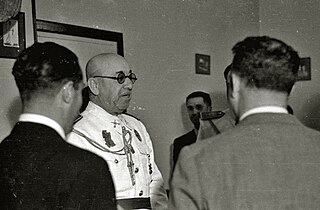
José Moscardó e Ituarte, 1st Count of the Alcázar of Toledo, Grandee of Spain was the military Governor of Toledo Province during the Spanish Civil War. He sided with the Nationalist army fighting the Republican government and his most notable action was the defence and holding of the Alcázar of Toledo against Republican forces.

José Luis Cuevas was a Mexican artist, he often worked as a painter, writer, draftsman, engraver, illustrator, and printmaker. Cuevas was one of the first to challenge the then dominant Mexican muralism movement as a prominent member of the Generación de la Ruptura. He was a mostly self-taught artist, whose styles and influences are moored to the darker side of life, often depicting distorted figures and the debasement of humanity. He had remained a controversial figure throughout his career, not only for his often shocking images, but also for his opposition to writers and artists who he feels participate in corruption or create only for money. In 1992, the José Luis Cuevas Museum was opened in the historic center of Mexico City holding most of his work and his personal art collection. His grandson Alexis de Chaunac is a contemporary artist.

Gustavo Adolfo Claudio Domínguez Bastida, better known as Gustavo Adolfo Bécquer, was a Spanish Romantic poet and writer, also a playwright, literary columnist, and talented in drawing. Today, some consider him one of the most important figures in Spanish literature, and is considered by some as the most read writer after Miguel de Cervantes. He adopted the alias of Bécquer as his brother Valeriano Bécquer, a painter, had done earlier. He was associated with the romanticism and post-romanticism movements and wrote while realism enjoyed success in Spain. He was moderately well-known during his life, but it was after his death that most of his works were published. His best-known works are the Rhymes and the Legends, usually published together as Rimas y leyendas. These poems and tales are essential to studying Spanish literature and common reading for high-school students in Spanish-speaking countries.

Julio González i Pellicer, born in Barcelona, was a Spanish sculptor and painter who developed the expressive use of iron as a medium for modern sculpture. He was from a lineage of metalsmith workers and artists. His grandfather was a goldsmith worker and his father, Concordio González, a metalsmith worker who taught him the techniques of metalsmith in his childhood years. His mother, Pilar Pellicer Fenés, came from a long line of artists.

Luis Nishizawa Flores was a Mexican artist known for his landscape work and murals, which often show Japanese and Mexican influence. He began formal training as an artist in 1942 at the height of the Mexican muralism movement but studied other painting styles as well as Japanese art.
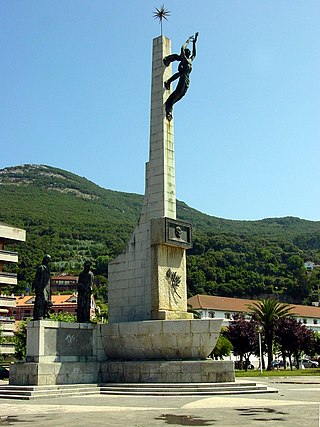
Juan de Ávalos y García-Taborda was a Spanish sculptor.
José Caballero was a Spanish painter.
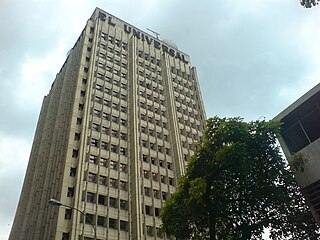
El Universal is a major Venezuelan newspaper, headquartered in Caracas. El Universal is part of the Latin American Newspaper Association, an organization of leading newspapers in Latin America. Its main rival is El Nacional. The newspaper does not disclose circulation figures.

The Weeping Woman is a series of oil on canvas paintings by Pablo Picasso, the last of which was created in late 1937. The paintings depict Dora Maar, Picasso's mistress and muse. The Weeping Woman paintings were produced by Picasso in response to the bombing of Guernica in the Spanish Civil War and are closely associated with the iconography in his painting Guernica. Picasso was intrigued with the subject of the weeping woman, and revisited the theme numerous times that year. The last version, created on 26 October 1937, was the most elaborate of the series, and has been housed in the collection of the Tate Modern in London since 1987. Another Weeping Woman painting created on 18 October 1937 is housed at the National Gallery of Victoria and was involved in a high-profile political art theft.

Luis Arenal Bastar was a Mexican painter, engraver and sculptor. He was a founding member of the Liga de Escritores y Artistas Revolucionarios, the Taller de Gráfica Popular and the Salón de la Plástica Mexicana. In addition, he created murals and other monumental works in Mexico City and Guerrero.
Luis Ortiz Monasterio was a Mexican sculptor noted for his monumental works such as the Monumento a la Madre and the Nezahualcoyotl Fountain in Chapultepec Park. His work was recognized in 1967 with the Premio Nacional de Artes and was a founding member of the Academia de Artes.
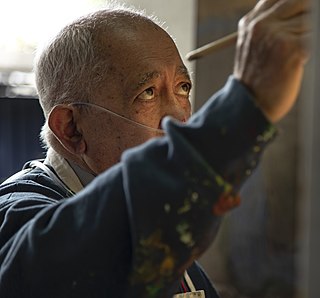
Gilberto Aceves Navarro was a Mexican painter and sculptor and a professor at the Escuela Nacional de Artes Plásticas and Academy of San Carlos. There have been more than two hundred individual exhibits of his work, with his murals found in Mexico, Japan and the United States. He received numerous awards for his work including grants as a Creador Artístico of the Sistema Nacional de Creadores de Arte, Premio Nacional de Ciencias y Artes and Bellas Artes Medal from the Instituto Nacional de Bellas Artes.

Jerónimo Luis de Cabrera was a Spanish conquistador, early colonial governor over much of what today is northwestern Argentina, and founder of the city of Córdoba.
Javier Arevalo was a contemporary Mexican artist whose work was the subject of many exhibitions, worldwide, including in Europe, Latin America, United States, Mexico and Japan. His influence was greatest in Mexico City, and Guadalajara, Jalisco. He also taught Art at the Palacio de Bellas Artes in Mexico City.
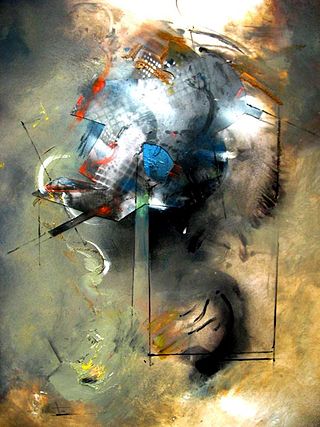
Generación de la Ruptura is the name given by art critic Teresa del Conde to the generation of Mexican artists against the established Mexican School of Painting, more commonly called Mexican muralism post World War II. It began with the criticisms of José Luis Cuevas in the early 1950s, followed by others who thought the established art had become dogmatic, formulaic and nationalistic and the artists too deferential to the government. This new generation of artists was not bound by a particular artistic style but was more interested in personal rather than social issues and influenced by a number of international trends in art such as Abstract expressionism. Early reaction to them was strong and negative but by the end of the 1950s, they had succeeded in having their art shown in the major venues of Mexico. The Generación de la Ruptura had influence on other arts in Mexico, such as literature but it did not end the production of murals in Mexico with social and nationalist purposes.
Luis Y. Aragón is a Mexican painter and sculptor, best known for his sculpted mural work, as well as the design of the Gawi Tonara award which is given by the state of Chihuahua. His mural work can be found in various parts of Mexico, especially his home state of Chihuahua and Mexico City. His work has been exhibited in Mexico and abroad, generally in the Americas and Europe. He is a member of the Salón de la Plástica Mexicana and works in Mexico City.

"The Analytical Language of John Wilkins" is a short essay by Argentine writer Jorge Luis Borges, first printed in La Nación on 8 February 1942 and subsequently published in Otras Inquisiciones (1937–1952). It is a critique of the English natural philosopher and writer John Wilkins's proposal for a universal language and of the representational capacity of language generally. In it, Borges imagines a bizarre and whimsical fictional Chinese taxonomy later quoted by Michel Foucault, David Byrne, and others.
Toros Y Toreros is a 1961 book of bullfighting drawings by Pablo Picasso with text by bullfighter Luis Miguel Dominguin and an essay by Georges Boudaille. The title of the book is handwritten by Picasso.
Historia de la frivolidad is a 1967 Spanish television special by Televisión Española, directed by Narciso Ibáñez Serrador, written by himself and Jaime de Armiñán, with music by Augusto Algueró and drawings by Mingote. It first aired on February 9, 1967. It relates, through a series of humorous sketches, the history of eroticism, and the efforts of the censors of all ages to conceal it.













